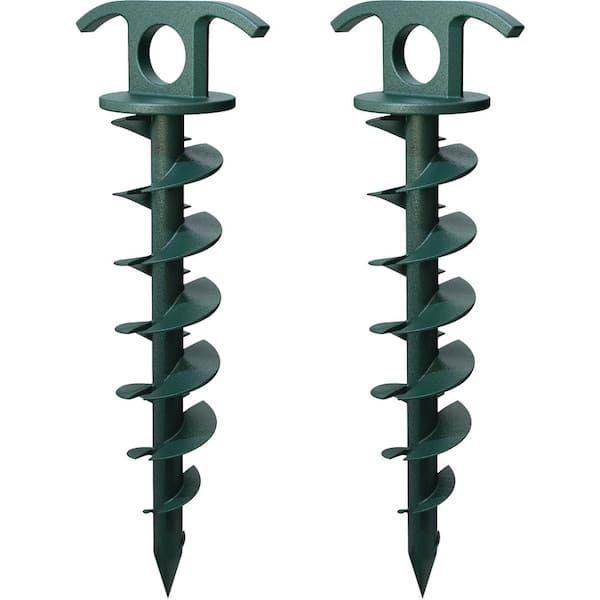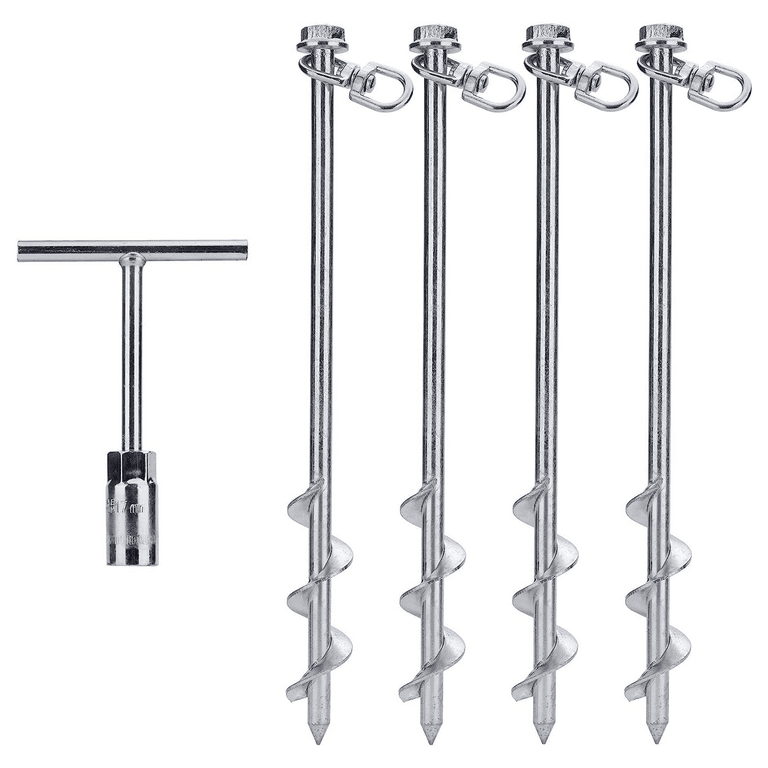How a Ground Anchor Can Boost Protection for Your Structures
How a Ground Anchor Can Boost Protection for Your Structures
Blog Article
Discover the Various Kinds Of Ground Support for Your Following Task
When starting a building or landscaping project, understanding the different kinds of ground anchors readily available is important to ensuring both security and toughness (Ground Anchor). From auger supports, which succeed in varied soil problems, to stake anchors developed for temporary installations, the alternatives are many. Furthermore, concrete and screw supports existing distinct advantages in particular scenarios, while deadman anchors are tailored for applications needing resistance to lateral pressures. The option of an appropriate support type can dramatically influence the total success of your project, prompting more expedition right into their respective benefits and applications.

Auger Anchors
Auger anchors are a popular option in numerous construction and landscape design jobs as a result of their special design and reliable securing capacities. These supports are composed of a helical screw-like shaft that is driven right into the ground, permitting for a protected and steady hold. The spiral style helps with simple installation and takes full advantage of resistance against lateral forces, making auger supports specifically reliable in applications such as secure fencing, momentary structures, and erosion control.
The setup process of auger supports is reasonably straightforward. They can be by hand or mechanically mounted, relying on the dimension and needed depth. This flexibility enables their use in varied soil conditions, from sandy to clayey surfaces. Auger anchors can be conveniently gotten rid of and recycled, which adds to their cost-effectiveness and sustainability.
Among the significant benefits of auger supports is their capability to disperse tons uniformly across the surrounding dirt, reducing the risk of soil disruption and reducing environmental influence. In addition, they are much less at risk to heaving or loosening up gradually compared to standard anchoring techniques. Consequently, auger anchors are an exceptional option for projects requiring reputable and long lasting anchoring solutions.

Risk Anchors
When it pertains to protecting structures in a selection of exterior applications, risk anchors supply a trustworthy and straightforward option. These supports are typically created from resilient materials such as steel or light weight aluminum, created to withstand environmental tensions while offering optimal stability. Their straightforward style permits for quick setup, making them an ideal selection for irreversible or momentary anchoring demands.
Risk supports are particularly valuable in securing camping tents, canopies, and various other light-weight structures against wind and climate. They work by being driven into the ground at an angle, producing a strong hold that resists pull-out pressures - Ground Anchor. The efficiency of risk anchors depends on several variables, including dirt kind, wetness content, and the angle of setup
For added safety and security, several stake supports include add-on points for ropes or straps, permitting stress changes as necessary. In applications such as landscape design or construction, they can effectively maintain devices or frameworks on uneven terrain. Overall, risk anchors supply a cost-effective and functional solution for safeguarding various outdoor setups, making them a favored option for contractors and DIY lovers alike.
Concrete Anchors
Concrete anchors provide a robust solution for protecting frameworks to concrete surface areas, making certain security and security in various applications. These supports are essential for tasks varying from household building and constructions to large industrial setups. They come in different kinds, including development supports, adhesive anchors, and undercut supports, each developed for particular load demands and environmental conditions.
Adhesive anchors utilize high-strength epoxy or resin to bond the support to the concrete, supplying exceptional load-bearing capacities, especially in split concrete circumstances. Undercut supports create a distinct form within the concrete, providing phenomenal holding power, specifically in applications where tensile lots are widespread.
When implemented appropriately, concrete anchors significantly boost the structural stability of various tasks, making them vital in contemporary building and construction practices. Understanding the certain demands of your project will assist in picking the best kind of concrete anchor for the task.
Screw Anchors

Screw supports are a functional fastening remedy that can be effectively employed in a variety of applications where conventional concrete anchors might not suffice. These anchors are composed of a helical layout that permits them to be conveniently driven into the ground, making them excellent for use in soil and other substrates. Their one-of-a-kind structure provides superb holding power and resistance to pull-out forces, making them suitable for numerous projects, from landscaping to architectural assistance.
Among the main advantages of screw supports is their simplicity of installation. They call for marginal tools and can commonly be mounted without the need for excavation, which conserves both time and labor costs. Furthermore, screw supports can be gotten description rid of and reused, offering a sustainable service for short-lived applications.
Screw anchors are particularly advantageous in areas where dirt conditions are testing, such as sandy or loosened soils. Their ability to be set up at differing midsts enables for personalization based upon certain job requirements. Overall, screw supports give a effective and reputable securing approach, making them an excellent choice for engineers and professionals seeking effective services for their jobs.
Deadman Anchors
Deadman anchors act as a durable option for supporting frameworks in difficult problems, especially where typical anchoring methods may fail. These supports contain big, hefty things buried underground, which produce resistance against lateral forces. The style generally involves a horizontal part, such as a block of concrete or a metal plate, hidden in the dirt, to which bands or cable televisions are connected.
The effectiveness of deadman anchors hinges on their capacity to distribute loads over a larger location, decreasing the risk of failing in unpredictable soil problems. They are particularly helpful in applications such as preserving walls, short-lived frameworks, and slope stablizing, where dirt motion can jeopardize the integrity of the framework.
Setup of deadman anchors calls for cautious planning to ensure they are positioned at the proper depth and orientation, optimizing their load-bearing ability. While they might require even more labor and material than light-weight anchors, their dependability in adverse problems makes them vital for long-lasting jobs. In addition, deadman supports are versatile and can be adapted to numerous applications, making them a go-to option for designers dealing with special difficulties in their projects.
Final Thought
In summary, selecting the appropriate sort of ground anchor is crucial for ensuring stability and safety in different jobs. Auger anchors master diverse dirt problems, while risk supports suit short-term applications. For concrete surface areas, development and glue anchors give trustworthy choices, and screw anchors supply flexibility in difficult terrains. Deadman anchors are particularly reliable in withstanding lateral forces for preserving walls. Mindful consideration of these alternatives will enhance project outcomes and structural stability.
Furthermore, concrete and screw supports existing visit here distinct advantages in particular situations, while deadman supports are customized for applications needing resistance to lateral pressures - Ground Anchor.Auger supports are a preferred selection in different construction and landscape design tasks due to their special design and effective anchoring abilities. They come in various kinds, including growth anchors, sticky anchors, and undercut supports, each designed for particular lots demands and environmental problems
Adhesive anchors use high-strength epoxy or resin to bond the support to the concrete, supplying premium load-bearing capacities, specifically in fractured concrete circumstances. On the whole, screw anchors provide a dependable and efficient securing technique, making them an outstanding choice for engineers and read the full info here service providers seeking effective services for their tasks.
Report this page